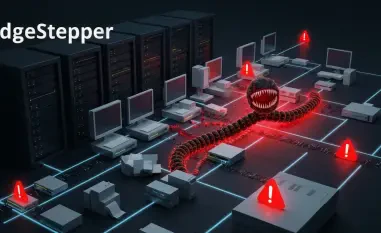Welcome to an in-depth conversation with Malik Haidar, a renowned cybersecurity expert with years of experience safeguarding multinational corporations from sophisticated cyber threats. With a sharp focus on analytics, intelligence, and integrating business perspectives into security strategies, Malik has been at the forefront of analyzing advanced persistent threats (APTs). Today, we dive into his insights on a recent wave of attacks targeting web infrastructure in Taiwan by a group known as UAT-7237. Our discussion explores the nature of this threat actor, their unique tools and tactics, the step-by-step process of their intrusions, how they differ from related groups, and the broader implications for cybersecurity.
Can you start by explaining what UAT-7237 is and why their recent focus on Taiwan’s web infrastructure has raised so much concern?
Absolutely, Stephen. UAT-7237 is a Chinese-speaking advanced persistent threat group that’s been on the radar since at least 2022. They’re believed to be a sub-cluster of a larger entity known as UAT-5918, which has a history of targeting critical infrastructure in Taiwan. What makes UAT-7237’s recent activities particularly alarming is their specific focus on web infrastructure—think servers and systems that are the backbone of many organizations. Taiwan, being a hub for technology and geopolitically significant, is a high-value target. Breaching these systems isn’t just about data theft; it’s about establishing long-term access for potential espionage or disruption, which could have far-reaching consequences for both businesses and national security.
What stands out to you about the tools UAT-7237 is using in these attacks?
One of the most striking aspects is their reliance on customized open-source tools. They take publicly available hacking frameworks and tweak them just enough to slip past standard detection mechanisms. A prime example is SoundBill, a bespoke shellcode loader they’ve developed to decode and deploy secondary payloads like Cobalt Strike, which is their go-to backdoor for maintaining control. The customization is clever—it’s not just about using what’s out there but adapting it to their needs, making it harder for defenders to spot familiar signatures. Their heavy use of Cobalt Strike also shows a preference for proven, versatile tools that give them flexibility to execute a range of malicious activities once they’re inside a network.
Can you walk us through the typical attack process UAT-7237 follows when targeting these systems?
Sure, their approach is quite methodical. It often starts with exploiting known vulnerabilities in unpatched, internet-facing servers—basically, low-hanging fruit that many organizations overlook. Once they’re in, they don’t rush. They conduct reconnaissance and fingerprinting to assess whether the target is worth deeper investment. If it is, they establish persistence using tools like SoftEther VPN clients and direct Remote Desktop Protocol access to ensure they can come back at will. From there, they pivot to other systems within the network, expanding their foothold. They deploy payloads like SoundBill to launch Cobalt Strike, and the cycle of deeper infiltration continues. It’s a slow, deliberate process designed to maximize control and minimize detection.
How does UAT-7237’s strategy differ from other threat groups you’ve studied, especially those like UAT-5918 or others operating in the same region?
That’s a great question. While UAT-7237 shares some tactical overlap with UAT-5918, their parent group, there are clear distinctions in their approach to persistence. UAT-5918 tends to deploy web shells right after a breach to create backdoor access, whereas UAT-7237 takes a different route, leaning on SoftEther VPN and RDP for sustained access. This mirrors some tactics seen in other groups like Flax Typhoon, particularly in how they use VPN tools to blend into normal network traffic. What sets UAT-7237 apart, though, is their selective deployment of web shells and their heavy reliance on Cobalt Strike as a primary backdoor. It’s a nuanced difference, but it shows a tailored strategy that’s less about immediate exploitation and more about long-term entrenchment.
What can you tell us about some of the specific techniques UAT-7237 uses to escalate their control over compromised systems?
They’re quite sophisticated in this regard. One tool they frequently use is JuicyPotato, which is a well-known privilege escalation utility among Chinese hacking groups. It helps them gain higher-level access on compromised systems, essentially moving from a limited user to full administrative control. Another key tool is Mimikatz, which they use to extract credentials from memory—think usernames and passwords in plaintext. Recently, they’ve even embedded Mimikatz functionality directly into an updated version of SoundBill, streamlining their ability to steal credentials without deploying separate tools. They also tinker with Windows Registry settings to disable security features like User Account Control and enable storage of cleartext passwords, which just shows how thorough they are in locking down their access.
Looking ahead, what is your forecast for the evolution of threats like UAT-7237 in targeting critical infrastructure?
I think we’re going to see these groups become even more adaptive and stealthy. As defenders get better at spotting known tools and tactics, threat actors like UAT-7237 will continue to customize open-source tools and integrate capabilities—like embedding Mimikatz into loaders—to stay under the radar. I also expect a growing focus on critical infrastructure across regions with geopolitical tension, not just Taiwan. These aren’t random attacks; they’re strategic, often state-aligned efforts to gain leverage. My forecast is that we’ll see more hybrid approaches, blending traditional hacking with supply chain attacks or even physical infrastructure targeting, making it crucial for organizations to adopt a multi-layered defense strategy that anticipates both digital and real-world impacts.













